Unlocking the Potential: A Guide to What 3-Year-Olds Should Be Learning
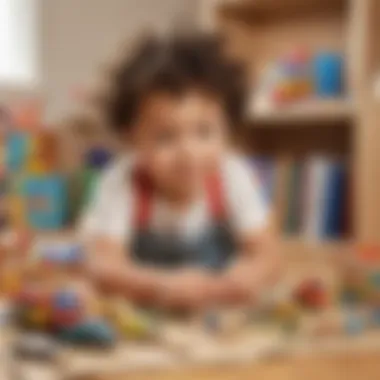
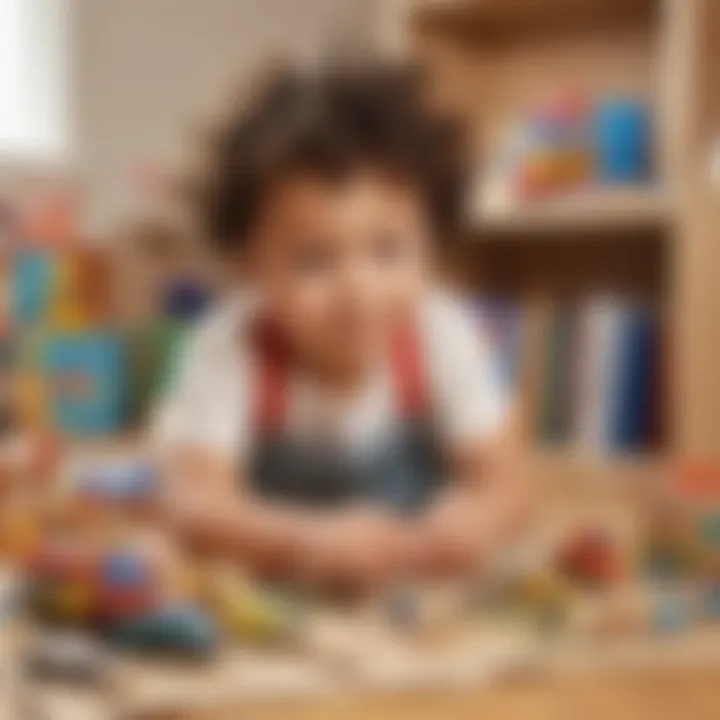
Creative Activities
When it comes to enriching the learning experiences of 3-year-olds, engaging them in creative activities plays a pivotal role. These activities not only foster imagination but also enhance cognitive and motor skills. From simple crafts using paper and glue to more elaborate projects involving various materials, the possibilities are endless. By encouraging children to participate in these activities, parents and educators can provide them with a platform to explore their creativity and develop essential skills that will benefit them in the long run.
Crafting promotes dexterity and hand-eye coordination, as children grasp small objects, cut shapes, and paste materials together. Simple craft ideas such as making paper plate animals or creating finger puppets using old socks can ignite a child's imagination and improve their fine motor skills. Additionally, engaging in crafts allows children to think critically, solve problems, and follow step-by-step instructions, enhancing their cognitive abilities and fostering a sense of accomplishment.
Providing step-by-step guides for each craft activity ensures that children can easily follow the instructions and complete the project successfully. Clear and concise directions paired with visual aids support young learners in independently creating their own craft masterpieces. Breaking down the crafting process into manageable steps not only simplifies the task but also reinforces comprehension and sequencing skills in 3-year-olds.
The educational value of these creative activities lies in their ability to stimulate various aspects of a child's development. Through crafting, children not only enhance their fine motor skills but also improve their concentration, attention to detail, and creative thinking. Moreover, these activities promote self-expression and offer a platform for children to communicate their ideas visually, thereby nurturing their emotional intelligence and building confidence in their abilities.
Introduction
In the realm of early childhood education, the topic of what 3-year-olds should be learning holds paramount significance. This pivotal stage marks a crucial period in a child's intellectual, emotional, and physical development. By delving into this subject, we aim to provide a comprehensive roadmap for parents and educators, guiding them through the intricacies of nurturing young minds. Understanding the foundational skills and knowledge that are vital at this age is essential for fostering a strong educational journey. From language acquisition to imaginative play, each facet plays a vital role in shaping a child's cognitive, social, emotional, and physical abilities.
At the core of our discussion is the recognition that the early years serve as the bedrock for future academic success and emotional well-being. This article not only sheds light on what young children should be learning but also illuminates the rationale behind these educational milestones. By engaging with the developmental needs of 3-year-olds, we can establish a solid framework for their growth and learning. Through exploration, experimentation, and guidance, both parents and educators can play a pivotal role in sculpting a rich and stimulating educational environment tailored to their specific needs and capacities.
Cognitive Development:
Importance of Cognitive Development:
Cognitive development in early childhood plays a pivotal role in shaping a child's ability to learn, reason, and solve problems. It encompasses a range of crucial skills that are foundational for academic success and overall mental growth. By focusing on cognitive development, we aim to stimulate the young minds of 3-year-olds, laying down the groundwork for their future intellectual pursuits.
Language Acquisition:
Building Vocabulary:
The process of building vocabulary is instrumental in a child's language development journey. It involves the acquisition of new words and understanding their meanings, essential for effective communication and comprehension. Building vocabulary at a young age enhances linguistic abilities and fosters expressive skills, enabling children to articulate their thoughts and emotions more effectively.
Understanding Basic Grammar:
Gaining competence in basic grammar rules empowers children to structure sentences coherently and grasp the fundamental principles of language usage. Understanding basic grammar not only refines communication skills but also contributes to cognitive development by enhancing logical thinking and problem-solving abilities. It serves as a cornerstone for language proficiency and paves the way for advanced language learning paths.
Numeracy Skills:


Counting:
The skill of counting forms the foundation of mathematical literacy, enabling children to quantify objects and comprehend numerical concepts. Through counting, young learners develop a sense of numerical order and quantity, essential for mathematical reasoning and problem-solving. Mastering counting lays a strong mathematical groundwork for future educational endeavors and fosters a structured approach to mathematical tasks.
Recognizing Shapes and Colors:
Recognizing shapes and colors is a fundamental numeracy skill that aids in spatial awareness and visual discrimination. By identifying shapes and colors, children enhance their perceptual abilities and lay the groundwork for more advanced mathematical concepts. This skill not only sharpens cognitive abilities but also sparks curiosity and creativity, fostering a holistic approach to numeracy learning.
Problem-Solving:
Simple Puzzles:
Engaging in simple puzzles nurtures children's problem-solving skills by encouraging logical reasoning and critical thinking. Puzzles stimulate cognitive functions and enhance analytical abilities, providing a playful yet effective way to develop problem-solving techniques. Solving puzzles instills perseverance and resilience in children, preparing them to tackle complex challenges with confidence and strategic thinking.
Matching Games:
Matching games offer a dynamic platform for enhancing children's cognitive skills through pattern recognition and memory retention. By engaging in matching games, children sharpen their concentration and cognitive flexibility, improving cognitive processing speed and visual discrimination. These games promote cognitive development in a fun and interactive manner, fostering cognitive adaptability and enhancing memory recall abilities.
Social and Emotional Development
Social and emotional development is a critical aspect when considering what 3-year-olds should be learning. At this age, children start to develop key skills that lay the foundation for their future interactions and relationships. Understanding and managing emotions, building relationships, and comprehending social cues are fundamental elements. These skills not only shape their character but also play a significant role in their overall wellbeing and success. Parents and educators need to emphasize the importance of nurturing social and emotional growth alongside cognitive and physical development.
Building Relationships
Playing with Peers
Playing with peers is a vital component of social and emotional development. It enables children to learn essential social skills such as cooperation, communication, and conflict resolution. Interacting with peers helps them understand the importance of sharing, taking turns, and respecting others. Through play, children explore different roles, develop empathy, and learn to navigate social scenarios. Playing with peers fosters a sense of belonging and community among children, promoting positive self-esteem and mental wellbeing. Encouraging peer interactions from a young age sets a strong foundation for healthy relationships throughout life.
Sharing and Taking Turns
Sharing and taking turns are crucial aspects of social development for 3-year-olds. Learning to share teaches children about generosity, empathy, and consideration for others' feelings. It cultivates essential social skills like patience, reciprocity, and teamwork. Taking turns enhances children's ability to wait, listen, and cooperate, preparing them for future academic and social settings. While sharing and taking turns promote prosocial behavior, they also instill patience and understanding in children, nurturing their emotional intelligence and empathy towards others.
Emotional Regulation
Identifying Emotions
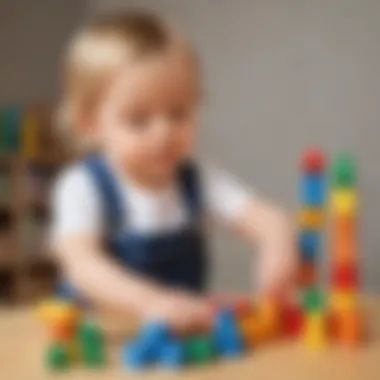
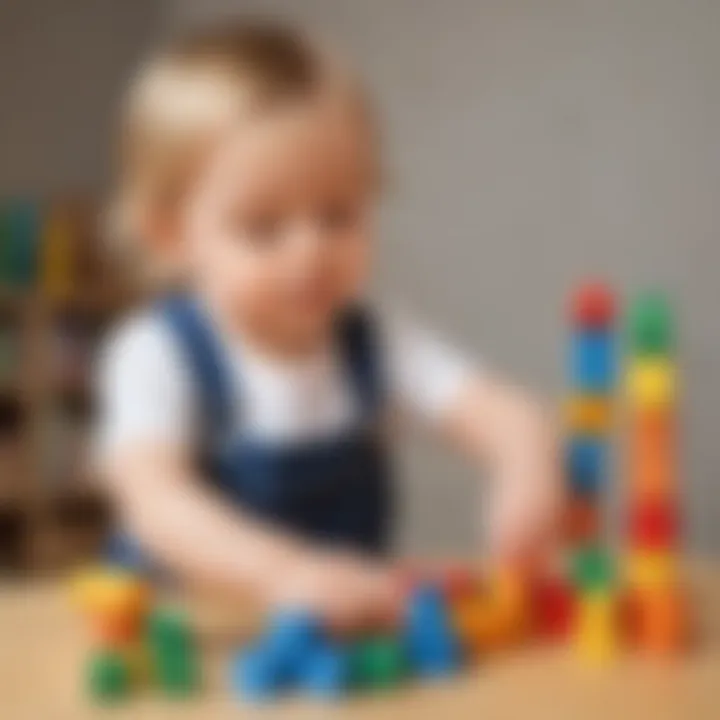
Identifying emotions is a fundamental skill for 3-year-olds as they start recognizing and labeling their feelings. Understanding emotions helps children communicate their needs effectively, build self-awareness, and regulate their behavior. By identifying emotions like happiness, sadness, fear, and anger, children learn to express themselves appropriately, seek support when needed, and empathize with others. Developing emotional vocabulary at a young age plays a significant role in shaping children's emotional intelligence and resilience.
Coping Strategies
Teaching 3-year-olds coping strategies is imperative for their emotional development. Coping strategies equip children with effective tools to manage stress, anxiety, and frustration. Encouraging healthy coping mechanisms like deep breathing, mindful relaxation, and positive self-talk helps children navigate challenging situations constructively. By teaching children to cope positively, parents and educators empower them to regulate their emotions, deal with setbacks, and build resilience. Introducing coping strategies early on fosters emotional stability, confidence, and adaptive behavior in young children.
Physical Development
In the ever-evolving landscape of early childhood education, where the foundation of a child's future is laid, physical development stands as a cornerstone. Understanding the significance of nurturing a child's gross and fine motor skills at a tender age is paramount. It sets the stage for their physical capabilities and overall well-being as they grow and navigate the complexities of the world around them.
Gross Motor Skills
A fundamental aspect of physical development in 3-year-olds, gross motor skills encompass activities that involve large muscle groups, promoting strength, coordination, and mobility. Running and Jumping play a crucial role in enhancing cardiovascular fitness, coordination, and energy release in young children. These activities not only aid in physical health but also contribute to overall cognitive development by improving focus, attention span, and emotional regulation. Parents and caregivers should encourage such activities to foster a holistic approach to a child's well-being.
On the other hand, Balancing is another essential skill that hones a child's ability to control their body in various positions. Balancing activities help children develop core strength, stability, and spatial awareness, laying the foundation for more complex physical tasks in the future. Moreover, a sense of accomplishment and confidence is nurtured through achieving balance, further boosting a child's self-esteem and overall physical confidence.
Fine Motor Skills
Delving into the realm of fine motor skills, activities like Drawing and Coloring act as pivotal tools in refining a child's hand-eye coordination, pencil grip, and creativity. These seemingly simple activities are rich in developmental benefits, improving focus, creativity, and attention to detail. Moreover, the process of drawing and coloring encourages self-expression and artistic exploration, fostering a child's imagination and cognitive abilities.
Similarly, Manipulating Small Objects refines a child's dexterity, precision, and problem-solving skills. Engaging in activities that involve manipulating small objects, such as building blocks or puzzles, enhances a child's hand strength, finger coordination, and spatial awareness. These activities not only sharpen fine motor skills but also promote cognitive development by challenging a child's problem-solving abilities and logical thinking skills.
Creative Expression
Creative expression is a vital aspect of early childhood development, fostering imagination and innovation in young minds. Encouraging creativity in 3-year-olds is instrumental in laying the foundation for future artistic exploration and cognitive growth. Through engaging in various art activities, children enhance their problem-solving skills, fine motor abilities, and emotional intelligence. Creative expression offers a unique avenue for self-discovery and communication for youngsters, allowing them to express thoughts and emotions in a tangible and meaningful way. Initiating children into the world of art at a young age cultivates a lifelong appreciation for creativity and aesthetics.
Artistic Activities
Exploring Different Art Mediums
Exploring different art mediums introduces 3-year-olds to a diverse range of materials, colors, and textures, expanding their sensory experiences and artistic horizons. This hands-on approach nurtures experimentation and creativity, enabling children to express themselves through painting, drawing, sculpting, and more. By exploring varied mediums such as watercolors, crayons, clay, and collage materials, young learners develop fine motor skills, hand-eye coordination, and spatial awareness. Diving into different art mediums sparks curiosity and imagination, encouraging children to explore different techniques and styles to create unique artwork.
Creating Simple Crafts
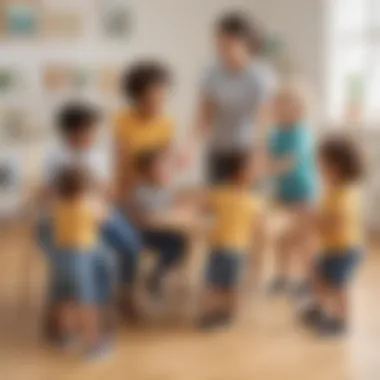
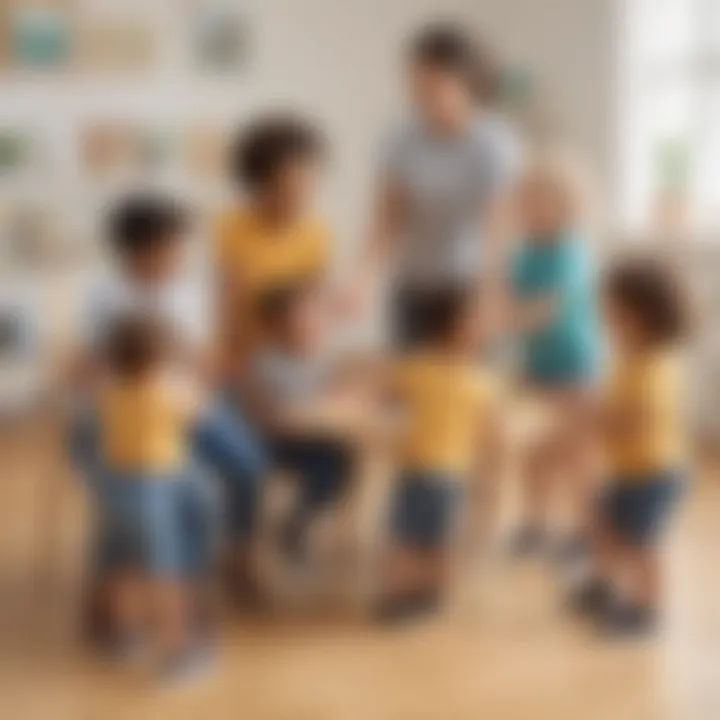
Engaging in creating simple crafts provides 3-year-olds with an opportunity to enhance their manual dexterity, creativity, and cognitive abilities. Through crafting activities like paper weaving, handprint painting, and string art, children refine their motor skills and attention to detail. Simple crafts not only serve as a fun and engaging pastime but also promote problem-solving skills, spatial reasoning, and decision-making. Craft projects foster a sense of accomplishment and pride in young children, boosting their self-confidence and creative development.
Imaginative Play
Pretend Play
Pretend play, also known as imaginative play, allows 3-year-olds to step into imaginary worlds, assume different roles, and engage in make-believe scenarios. This type of play nurtures creativity, social skills, and emotional intelligence, encouraging children to explore various narratives, emotions, and perspectives. Pretend play enables youngsters to experiment with different roles such as doctor, chef, or superhero, fostering empathy, communication, and problem-solving abilities. Through pretend play, children develop storytelling skills, teamwork, and improvisation, laying a strong foundation for cognitive and emotional growth.
Role-Playing Scenarios
Role-playing scenarios involve 3-year-olds acting out specific situations or roles, often inspired by real-life experiences or fictional stories. This form of play enhances children's language development, social interaction, and personal expression as they portray characters, communicate feelings, and problem-solve within a given scenario. Role-playing scenarios offer a safe space for children to explore different identities, emotions, and social dynamics, promoting empathy, cooperation, and conflict resolution skills. By engaging in role-playing activities, young learners enhance their storytelling abilities, creativity, and understanding of the world around them.
Parental Involvement
Parental involvement plays a pivotal role in shaping a 3-year-old's learning journey. Active parental participation in a child's development not only fosters a stronger bond but also enhances educational outcomes. By engaging in activities that support learning at home, parents can create a rich environment that stimulates cognitive growth. This direct involvement instills a sense of curiosity and eagerness to explore, essential traits for a child's overall development.
Supporting Learning at Home
Reading Together:
Reading together is a fundamental aspect of parental involvement that significantly benefits a child's linguistic and cognitive development. This activity exposes children to language structures, vocabulary, and comprehension skills. The interaction during shared reading sessions promotes language acquisition and nurtures a love for books. The bonding experience and emotional connection fostered through reading together create lasting memories and reinforce positive associations with learning.
Incorporating Educational Games:
Incorporating educational games at home is another valuable strategy for enriching a child's learning experience. Educational games are designed to be engaging, interactive, and educational, making learning enjoyable for young children. Through games, children can develop skills such as problem-solving, critical thinking, and decision-making in a playful setting. These activities encourage learning through exploration and play, enhancing the child's understanding of various concepts.
Communication with Educators
Effective communication between parents and educators is essential for maintaining a collaborative approach towards a child's education. Regular updates on a child's progress provide valuable insights into their development, strengths, and areas for improvement. This collaborative effort ensures that parents and educators are aligned in supporting the child's learning goals, facilitating a holistic approach to education.
Regular Updates on Child's Progress:
Providing regular updates on a child's progress allows parents to stay informed about their child's academic and social development. This open communication channels help identify any challenges early on and allows for timely interventions. It also fosters a sense of transparency and partnership between parents and educators, creating a supportive network for the child's educational journey.
Engaging in Parent-Teacher Discussions:
Engaging in parent-teacher discussions promotes a deeper understanding of the child's learning experiences and progress. These discussions enable parents to share insights into their child's behavior, preferences, and learning styles, aiding educators in tailoring their approach to meet the child's needs effectively. Collaboration between parents and educators empowers both parties to work towards a common goal of nurturing the child's development and academic success.
Conclusion
In wrapping up this comprehensive guide on what 3-year-olds should be learning, it is crucial to underscore the intrinsic significance of early childhood education. The formative years lay the groundwork for a child's future cognitive, social, emotional, and physical development. By focusing on the cognitive, social, physical, and creative aspects, we equip children with a strong foundation to navigate the complexities of the world they inhabit. Parents and educators play a pivotal role in nurturing and guiding children through these critical stages. It is imperative for parents to invest time and effort in engaging activities that stimulate growth across these diverse domains. Encouraging language acquisition, numeracy skills, problem-solving, emotional regulation, and creative expression not only fosters intellectual growth but also enhances the child's overall well-being. Collaborative efforts between parents, educators, and caregivers create a holistic environment that nurtures the child's potential. Regular communication and involvement in a child's learning journey are paramount in ensuring a comprehensive and tailored educational experience. By creating a harmonious synergy between home and educational settings, children are given the best chance to thrive and develop to their fullest potential. The benefits of investing in quality early childhood education extend far beyond the formative years, influencing a child's academic success, social aptitude, and emotional intelligence in the long run. Thus, the conclusion of this guide serves as a gentle reminder of the profound impact of early learning on a child's holistic development.







